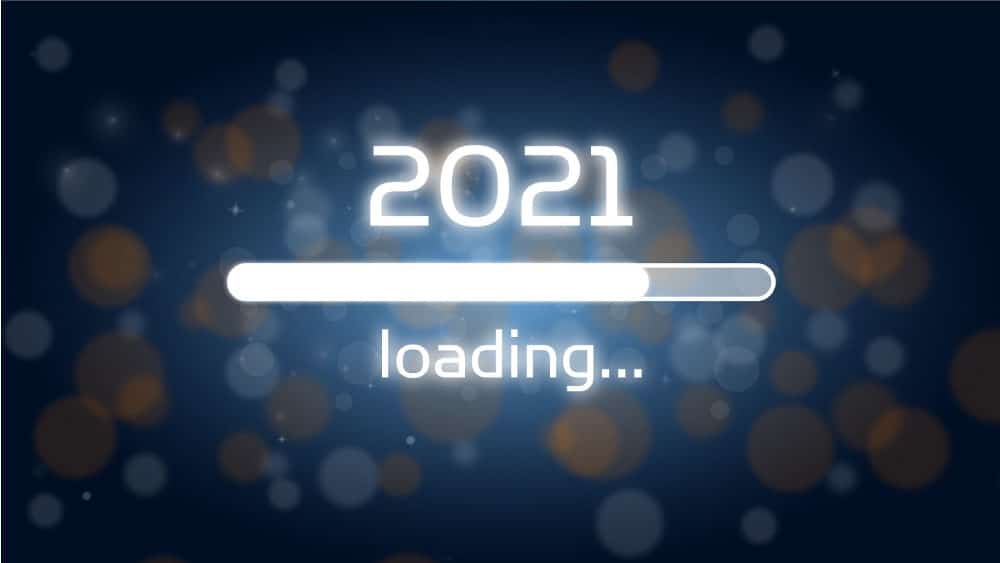BCDR and Data Security Planning for the New Year
To help you continue to protect against cyber threats in 2021 and beyond, here are several tips for your cybersecurity and business continuity planning in the new year from SWK Technologies. With this advice and SWK’s support, you will be able to better position your company to manage and defend your IT assets amidst the uncertainty and disruption of your evolving market. With real-time network monitoring, comprehensive user training, secure data backups and disaster recovery solutions, SWK will ensure that you have the right resources and guidance to maximize your business resilience.
COVID-19 and the new normal exponentially accelerated the push into a more digital world, and this transformation of traditional processes amplifies the importance of good data security. To get the most out of the advice in this article, and your IT, consider engaging a managed service partner like SWK Technologies to gain a better understanding of your digital assets and how your endpoints could be best protected.
Here are the nine top cybersecurity and business continuity tips for 2021 from SWK:
1. What the Pandemic Taught Us About Business Continuity
Coronavirus caused massive operational shifts that forced many to rethink their processes, while reinforcing lessons for those that had already distributed workforces and networks. If you have deployed remote workers for the first time, then this pandemic has undoubtedly presented a challenge in discovering how to restore and resume your business activities seamlessly. This demonstrates that business continuity requires more than just a basic data backup and your IT infrastructure is a mission-critical resource that must remain top of mind in disaster planning.
2. Cybersecurity Training for the New Decade
The intersection of so many employees working from home for the first time and the transforming realities of endpoint protection have made good user security practice paramount. Comprehensive cybersecurity training is a must – zero trust policies cannot be scaled to every single activity and eventually the safety of your network will fall back on personal cyber hygiene. Deploying informative education based on real-world examples will ensure your last line of cyber defense remains your strongest and most consistent countermeasure.
3. Will You Continue Working from Home Beyond 2021?
No matter when social distancing will finally end, having faced the advantages and disadvantages of a distributed workforce, your business is better equipped to leverage this model in 2021 and beyond. If and when the pandemic stops being the driving factor, will you continue to capture value from having some, many or every one of your employees working remotely? There are ample opportunities in telecommuting, but you must have a clear and structured cybersecurity policy for personnel working from home.
4. Data Risk & Compliance Audit
Data has accelerated the evolution of business, including the growth of the cybercrime ecosystem around capitalizing on its importance to you with tools like ransomware. Regulations have also been reinforced to address the increasingly porous nature of digital information collection, with a variety of consumer privacy protections at multiple government and industry levels. Your company must assess the risk of a breach and be able to audit your compliance processes to prevent one from happening, taking steps to identify and plug any gaps in your network.
5. How Secure are Your Backups?
Backing up your data is the first step in any business continuity plan (through far from the only one), but are you absolutely certain your backups are completely foolproof and cybersecure? Traditional methods have many vulnerabilities to human error and natural disaster, and often will either impede or outright prevent a full restoration of your system. Additionally, your software can significantly impact the type of solution you actually need to successfully capture every byte of information – make sure to talk to your reseller about what your version requires.
6. Ensuring Recovery from Disaster
The next step in business continuity is ensuring that you can actually recover from a disaster whether manmade or natural, and this requires more than just having a backup in place. Most importantly, you must ask yourself just how fast your company can migrate your saved data back into your system and restore your network – then ask how much business you could lose in that time. This requires a lot of measuring and testing to determine if your recovery solutions and processes are efficient enough, and what you can do to lessen the impact downtime has on your business.
7. The Right Tools – MFA, Encryption, and More
Real cybersecurity has moved well past the days of just deploying antivirus software, and there are many tools that help you provide additional layers of protection to deter hackers that get past one. Multi-factor authentication (MFA), encryption programs, virtual private networks (VPNs), email filtering, anti-malware and more help create a padded cyber defense when combined with the right support and training. Which solutions will work best for you, however, depend very much on your specific circumstances, and you should audit your network vulnerability to determine where extra security is most needed.
8. SIEM and SOC as a Service
Security information and event management (SIEM) technology closely watches the data flowing through your network and uses it to identify potential malicious activity. When leveraged by an experienced SOC (security operations) team that can recognize hacker footprints quickly, this creates a comprehensive cybersecurity monitoring and incident response solution that reacts to threats in real-time. Engaging this service will augment your static defenses and internal training with human cyber intelligence – reach out to SWK Technologies to learn more about our Smart SOC and its proprietary endpoint protection.
9. On-premise Servers VS Cloud Hosting
Where your data and IT assets live can make all the difference when it comes to your business continuity planning, and servers on-premise or in the cloud each require their own steps to cybersecure. However, it is not simply a matter of one or the other – we live in an increasingly “multi-cloud” world, not to mention the growing migration to hybrid systems where resources are divided between onsite and digital. Even if all you have is a Microsoft Office and QuickBooks installation, some or all of your files live in a hosted or cloud-adjacent environment and require their own cybersecurity protocols.
The Cybersecurity & Business Continuity Planning Essentials
Business continuity and cybersecurity are inextricably linked together, demonstrated by how both were impacted often simultaneously during 2020. Prepare better for 2021 by reviewing your BCP and determining where you have to room to improve and where you could be most vulnerable if downtime occurs.
Download our free ebook here to learn the 4 Business Continuity Essentials and let SWK help you move into 2021 with confidence in your cyber defense.[fc id=’34’][/fc]


